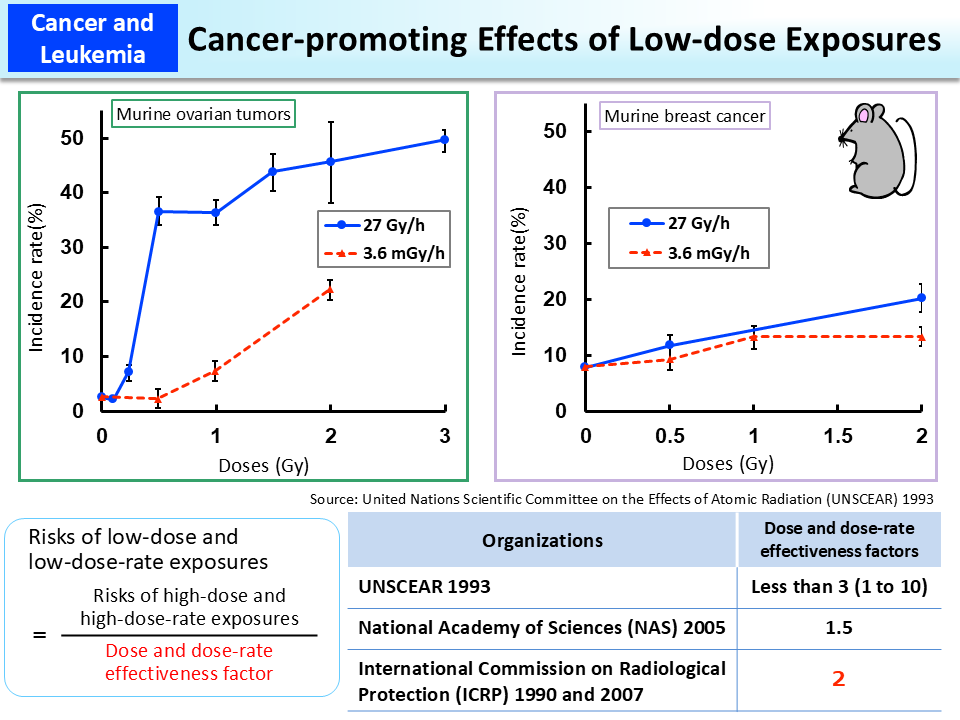Cancer-promoting Effects of Low-dose Exposures
Surveys targeting atomic bomb survivors have examined effects of large-amount radiation exposure at one time, while occupational exposures and exposures caused by environmental contamination due to a nuclear accident are mostly chronic low-dose exposures.
Therefore, animal testing using mice has been conducted to ascertain differences in oncogenic risks between a single large-amount radiation exposure and low-dose exposures over time. Although test results vary by type of cancer, it has become clear that radiation effects are generally smaller for low-dose exposures over a long period of time.
Dose and dose-rate effectiveness factors are correction values used in the case of estimating risks of low-dose exposures, for which no concrete data is available, on the basis of risks of high-dose exposures (exposure doses and incidence rates), or estimating risks of chronic exposures or repeated exposures based on risks of acute exposures. Researchers have various opinions on specific values to be used for considering radiological protection, but the ICRP uses 2 as the dose and dose-rate effectiveness factor in its Recommendations and concludes that long-term low-dose exposure would cause half the effects as those caused by exposure at one time, if the total exposure dose is the same.
(Related to p.124 of Vol. 1, “Effects of Long-Term Low-Dose Exposure”)
- Included in this reference material on March 31, 2013
- Updated on March 31, 2019

